It would be easy to believe that there’s little more to do in Exmoor National Park than soak up the rolling heather-clad moors, but this is only half the story. Hidden among the vast landscapes and charming villages are a number of wonderful treasures, from wildlife centres and heritage railways to ancient churches and National Trust tea rooms. If you want to discover a different side to Exmoor, then this list is for you.
Exmoor Pony Centre
About four miles west of Dulverton, close to Tarr Steps, is the hamlet of Ashwick and the Exmoor Pony Centre, home of the Moorland Mousie Trust (named after one of the most popular pony books of all time, published in 1929).
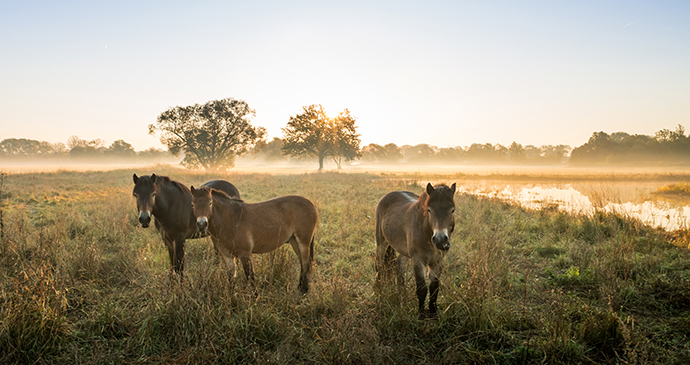
This charity was set up to give the surplus foals from moorland-bred herds a future by training them to be useful family ponies, so lovers of this distinctive native breed get a chance to meet them face to face and perhaps ‘adopt’ a pony to help with its upkeep. There’s an informative display about the Trust in the Green Room. Experienced riders under the weight of 12 stone (76kg) can book a two- or three-hour trek on Exmoor.
Exmoor Owl & Hawk Centre
Owls are the main attraction here – many different species, including a majestic grey owl – as well as the more familiar hawks. There is also a palmnut vulture.
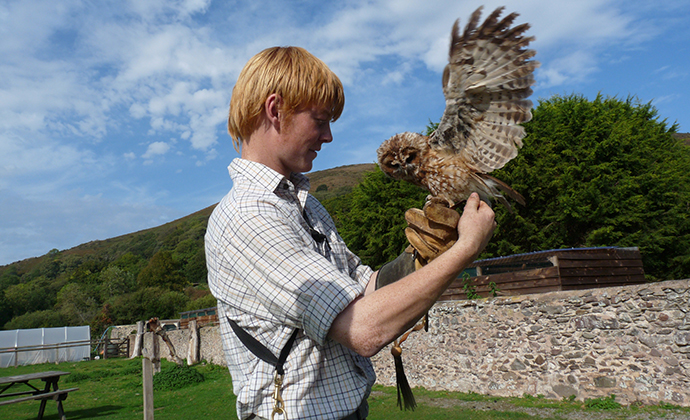
In addition to the flying displays, and an in-depth bird-of-prey experience, the centre offers riding with a difference. The horses go ‘barefoot and bitless’.
The centre also serves lunches and teas, and a B&B is available.
Lynton & Barnstaple railway
Although currently only two miles long, this narrow-gauge railway is the highest in England and its trains puff their way through some of Exmoor’s best scenery, making it a rewarding family excursion or a nostalgic trip for oldies.
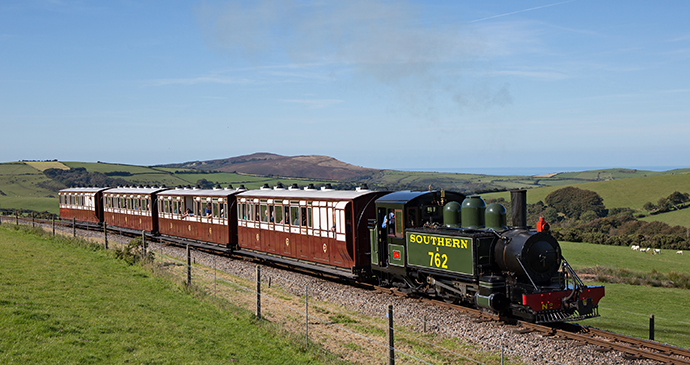
The enthusiasm of the volunteers who run this stretch of the original Lynton & Barnstaple Railway, which operated from 1898 to 1935, is evident in every detail, from the loving maintenance of the steam locomotives to the tea room. The station was originally planned to serve the actual Woody Bay (or Woodabay, as it was then called), nearly two miles away, with a branch line, as part of the scheme to make Woody Bay a major tourist attraction.
In 2018 the park authorities gave permission to extend the line west to Blackmoor Gate and eventually on to Barnstaple, recreating its original route, but there is fierce opposition from some landowners so whether this will actually be achieved is uncertain.
Quantock Heritage Bus
With the demise of the excellent Moor Rover, which used to provide ‘on call’ transport around Exmoor, there is almost no public transport in the heart of the national park. However, a glimmer of hope lies in the resuscitation of the number 300 bus between Minehead and Lynton.
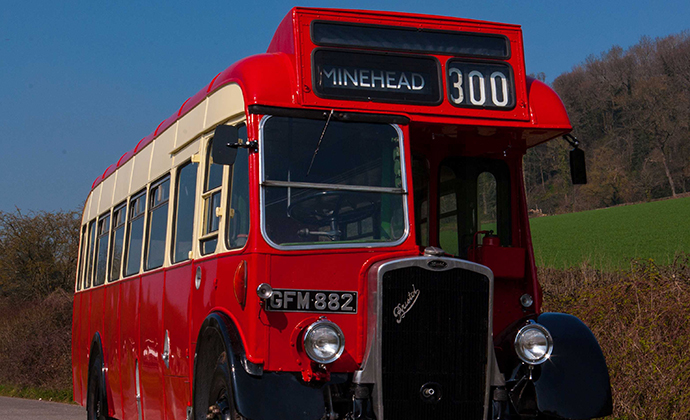
In 2018 this was revived as the Quantock Heritage Bus, operating twice a day for a couple of months in the summer. Running along the coastal road, it provides access to some of the most interesting and attractive places in Exmoor, and opens up some ‘bus assisted walks’. Concessionary bus passes are not accepted on this tourist bus.
Lynton & Lynmouth cliff railway
Linking Lynton and Lynmouth is the cliff railway, a masterpiece of simple engineering and a model of ‘green’ energy. The two carriages are counter-balanced by water. Fill the tank at the top, and it’s heavy enough to pull the other carriage up as it descends.
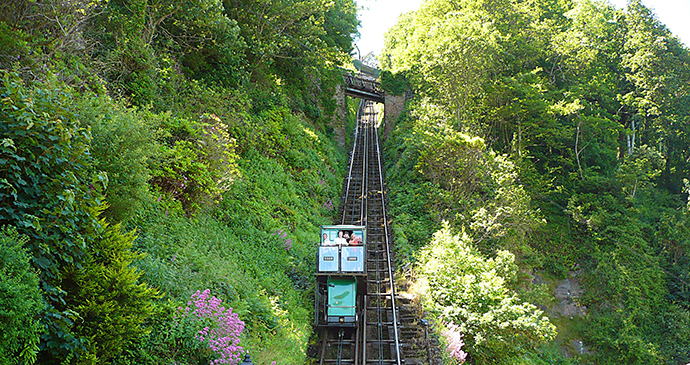
We watched the ‘driver’ at the bottom judge the amount of water to let out to counterbalance not only the weight of the carriage but the passengers as well. Really neat, and a great way to get to the top of a 500-foot cliff. The year 2015 marked 150 years of continuous operation. Dogs and bicycles are allowed. Before the road was built in 1828, tourists were transported to Lynton on donkeys or Exmoor ponies, as were all the goods arriving in the harbour.
Dunster Castle
Dunster Castle is mentioned in the Domesday Book and was home to the Luttrell family from 1405 until it was handed over to the National Trust in 1974. This unbroken span of ownership gives it a unique appeal, with features typical of each century of privileged, but usually charitable, living.
It is, simply put, gorgeous. The ornate plasterwork on the ceilings, the alabaster fireplaces, and the intricately carved grand-scale wooden staircase are particularly impressive, but so are the paintings, and the furniture, and even the bath (installed in 1870 and one of the first castiron baths in England). Look too at the unique leather paintings in the Leather Room, with scenes from Shakespeare’s Antony and Cleopatra.
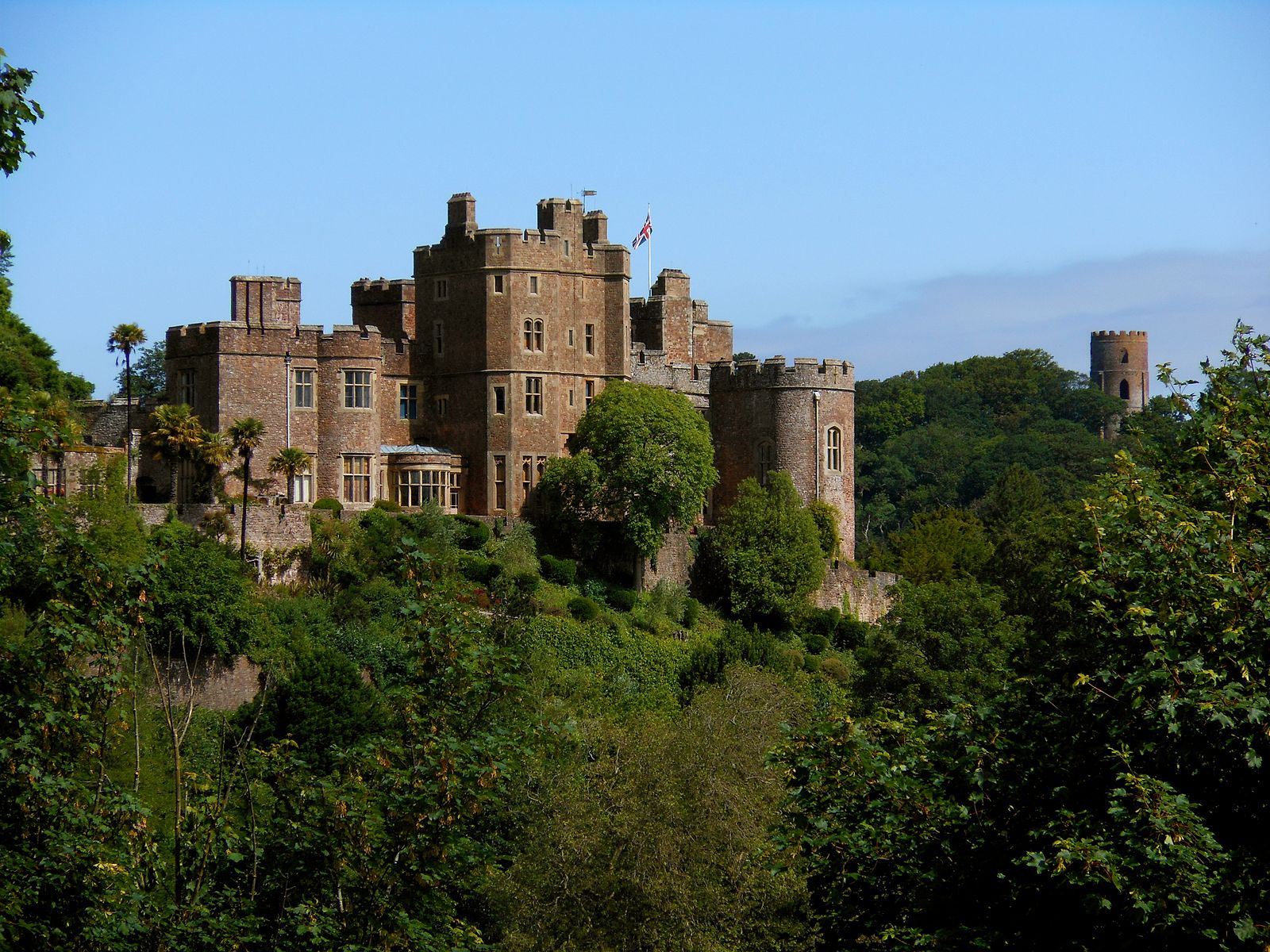
They were done in the Netherlands in 1681 and are not to modern taste, but the technique is fascinating. Tours of the attics and kitchens give you added insight into how a large house like this was run in the late 19th century, through its time as a convalescent home for US soldiers in World War II to the innovations introduced for the last Luttrell to live here, Alys. It’s very Downton Abbey.
As you explore, remember to look at the view over the Bristol Channel from any of the east-facing windows. You can clearly see the distinctive islands of Steepholm and Flatholm, and the Welsh coast.
When you have finished with the house, don’t miss the Dream Garden created by, or for, Alys Luttrell. At any season it’s a riot of flowers penned in by little box hedges, with paths winding between them and a backdrop of the church tower.
Watersmeet House
The less precipitous road to Lynmouth and beyond is Watersmeet Road, which takes you past one of the area’s most popular tea rooms, the National Trust-operated Watersmeet House (Easter–Oct daily, Nov–Easter Sat & Sun).
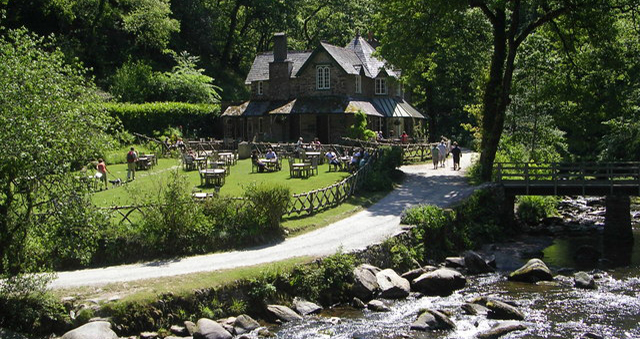
Most people walk here from Lynmouth but there is a (paying) parking area on the road above with a steep path down. Everything about this former fishing lodge is perfect: the choice of snacks and cakes, and especially the location.
Churchgoing
Churches form a large part of the architectural heritage of Exmoor, with nearly half of the Grade I-listed buildings in the national park being places of worship.
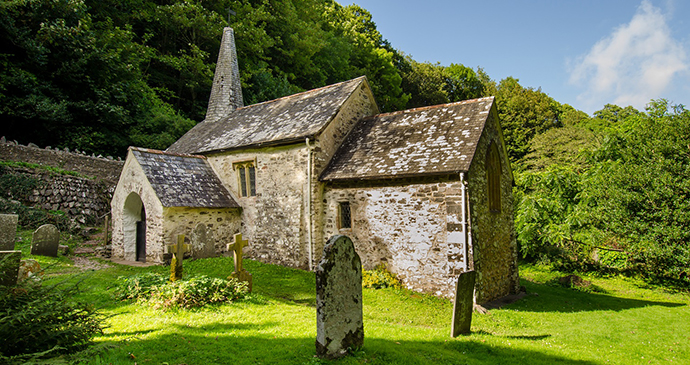
The size and style of these churches reflects the wealth of the parishes, with the simple moorland churches appearing more locally distinctive. The churches at Culbone and Trentishoe, in particular, are prime examples of moorland churches in the local style.
More information
Want to learn more about Exmoor? Why not check out our comprehensive travel guide: